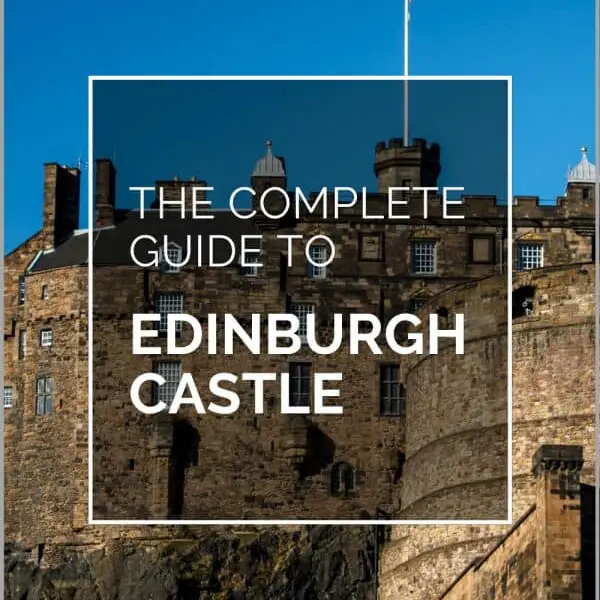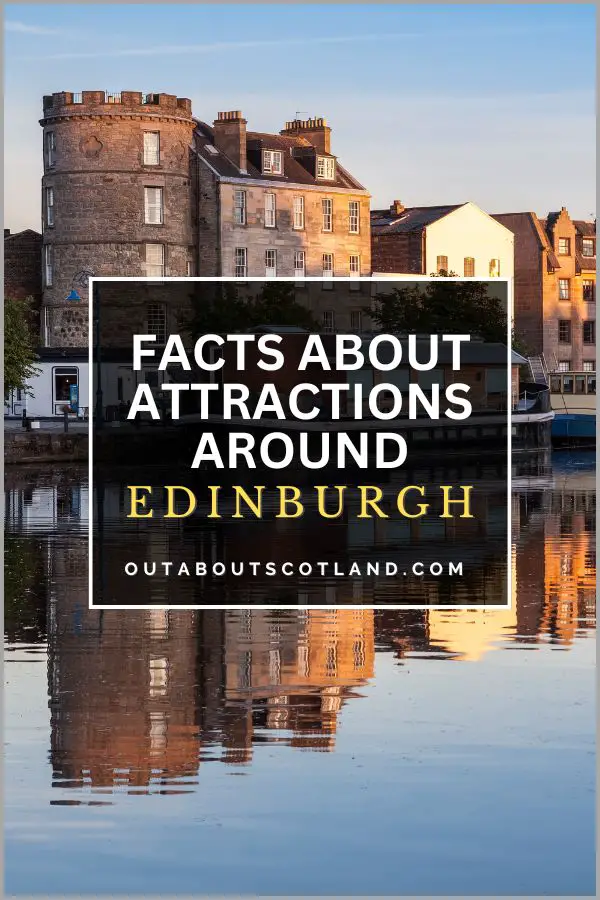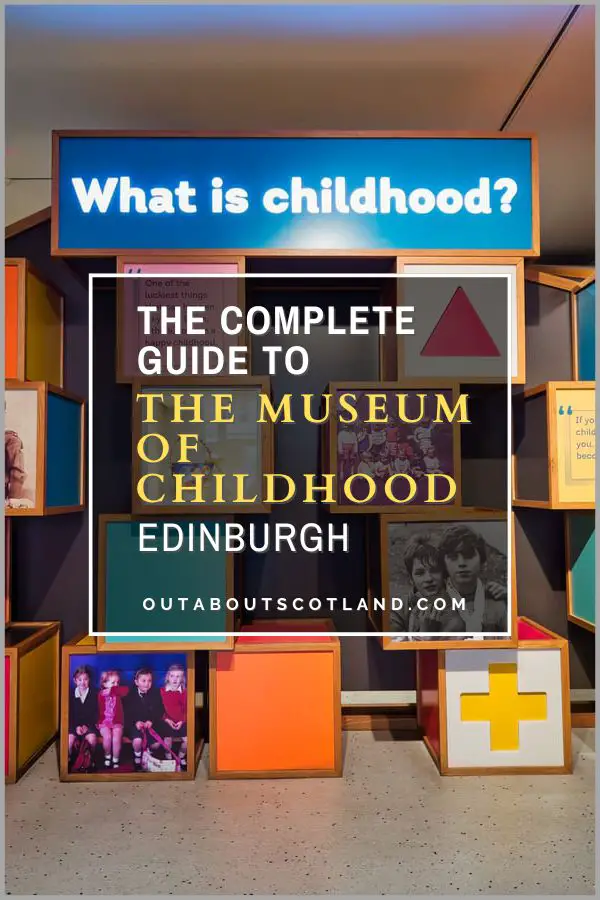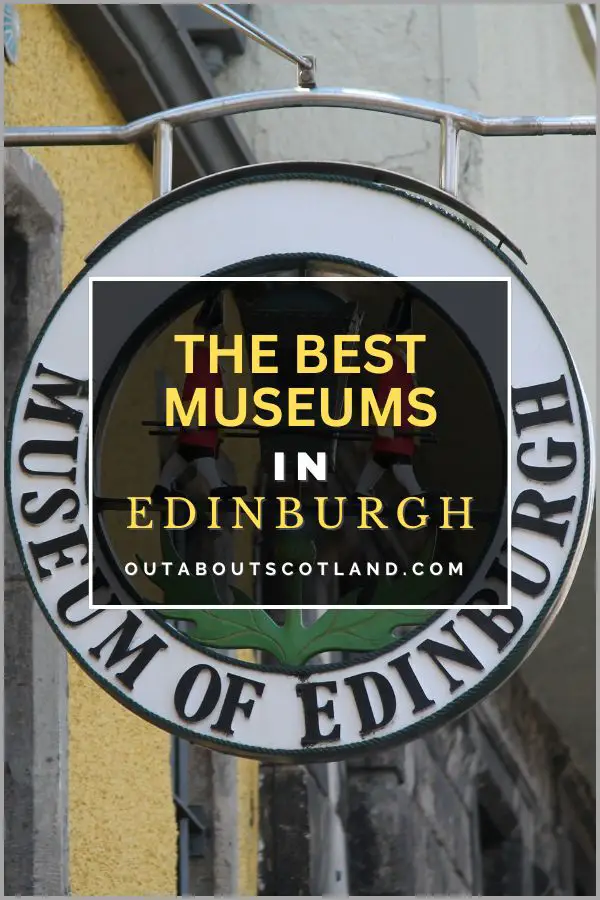Edinburgh Castle is one of the most iconic landmarks in Scotland, and for good reason. Located in the Old Town, it dominates the city’s skyline from its position on Castle Rock, where it has seen human occupation since at least the Iron Age.
There’s a lot to see and do at Scotland’s most-visited tourist attraction. Inside, you can explore St. Margaret’s Chapel, the oldest surviving building in Edinburgh, as well as the Royal Palace, which houses the Honours of Scotland, the country’s crown jewels. The Great Hall, the Stone of Destiny, and the National War Museum are more visitor favourites, alongside the One O’Clock Gun, which is fired at 1 p.m. six days a week.
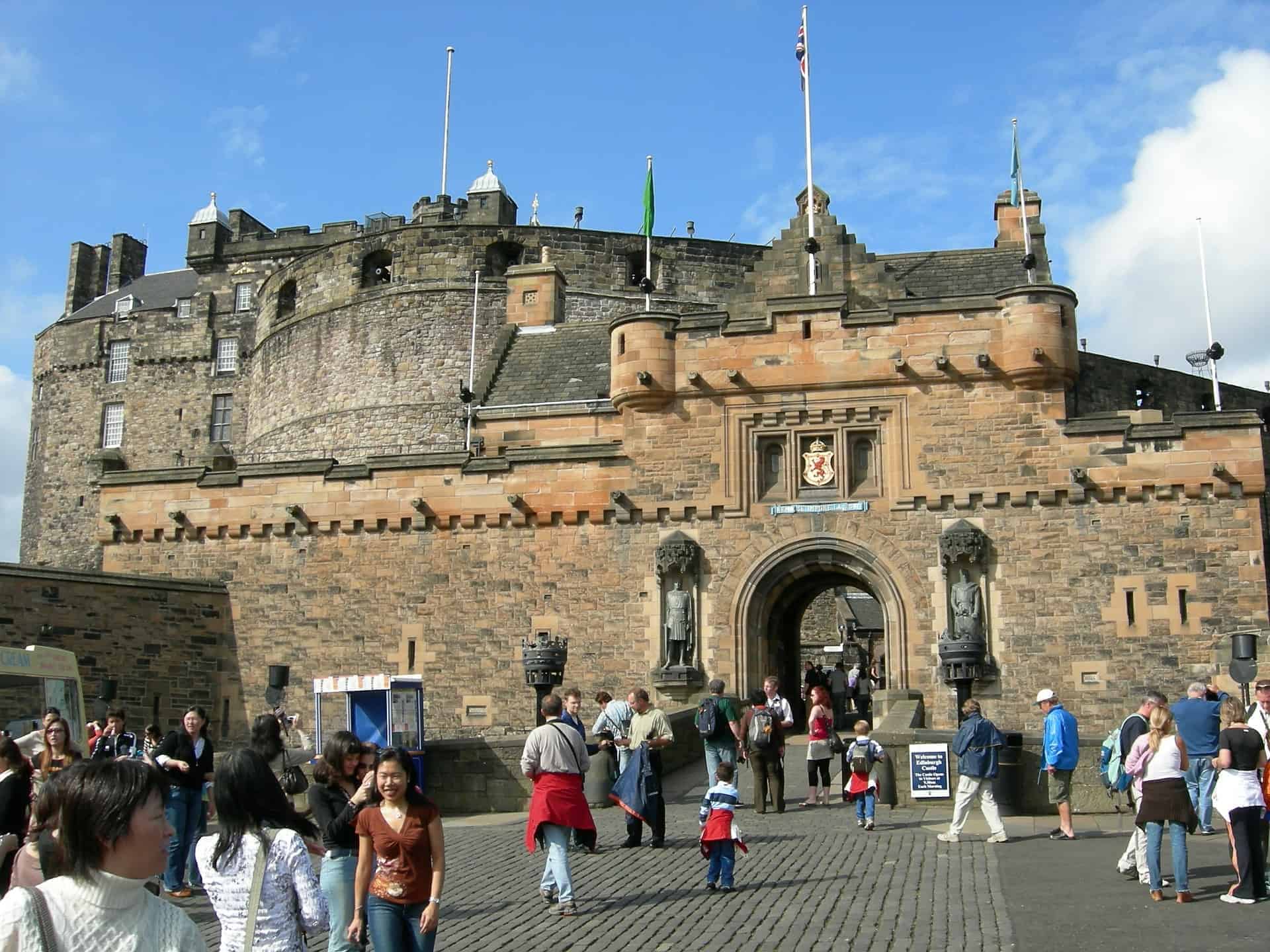
| Address: | The Esplanade, Edinburgh, EH1 2NG |
| Opening Hours: | 1 April to 30 September: 9.30 am to 6 pm (last entry 5 pm) 1 October to 31 March: 9.30 am to 5 pm (last entry 4 pm) |
| Admission Price: | Adult (16-64yrs): £21.00 Concession (65yrs+ and unemployed): £17.00 Child (5-15yrs): £12.50 Family (1 adult, 2 children): £41.50 Family (2 adults, 2 children): £60.50 Family (2 adults, 3 children): £72.00 |
| Parking: | No on-site car park. Paid car parks across Edinburgh. |
| Contact: | +44 (0)131 225 9846 |
| Facilities: | Cafes, gift shops, toilets, disabled access, audio guides, guided tours |
| BUY TICKETS | Click here to purchase |
Overview
The world-famous Edinburgh Castle doesn’t need an introduction as most visitors to Scotland will have researched it before leaving home, which is perfectly understandable as it’s Scotland’s most-visited tourist attraction.
The fact that the castle is so famous means that annual visitor numbers are huge (over 2 million), and it also holds the prestigious title of being the most popular attraction in Scotland. In fact, out of all the tourists who come to the country each year, over 70% claim that a visit to Edinburgh Castle is their top priority.
The castle sits perched at the very top of Castle Rock at the upper end of the Royal Mile, with the equally spectacular Holyrood Palace sitting at the bottom. In my opinion, it encapsulates everything that’s great about the best Scottish attractions. It’s enormous, atmospheric, very old, and set in a stunning location.
There are fascinating buildings to walk through, lots of interesting artefacts to look at, some excellent museums to wander around, and more exhibitions, shops, and cafés than you’ll likely be able to fit into a single visit. Basically, Edinburgh Castle rightly deserves its position as the nation’s number-one tourist attraction.
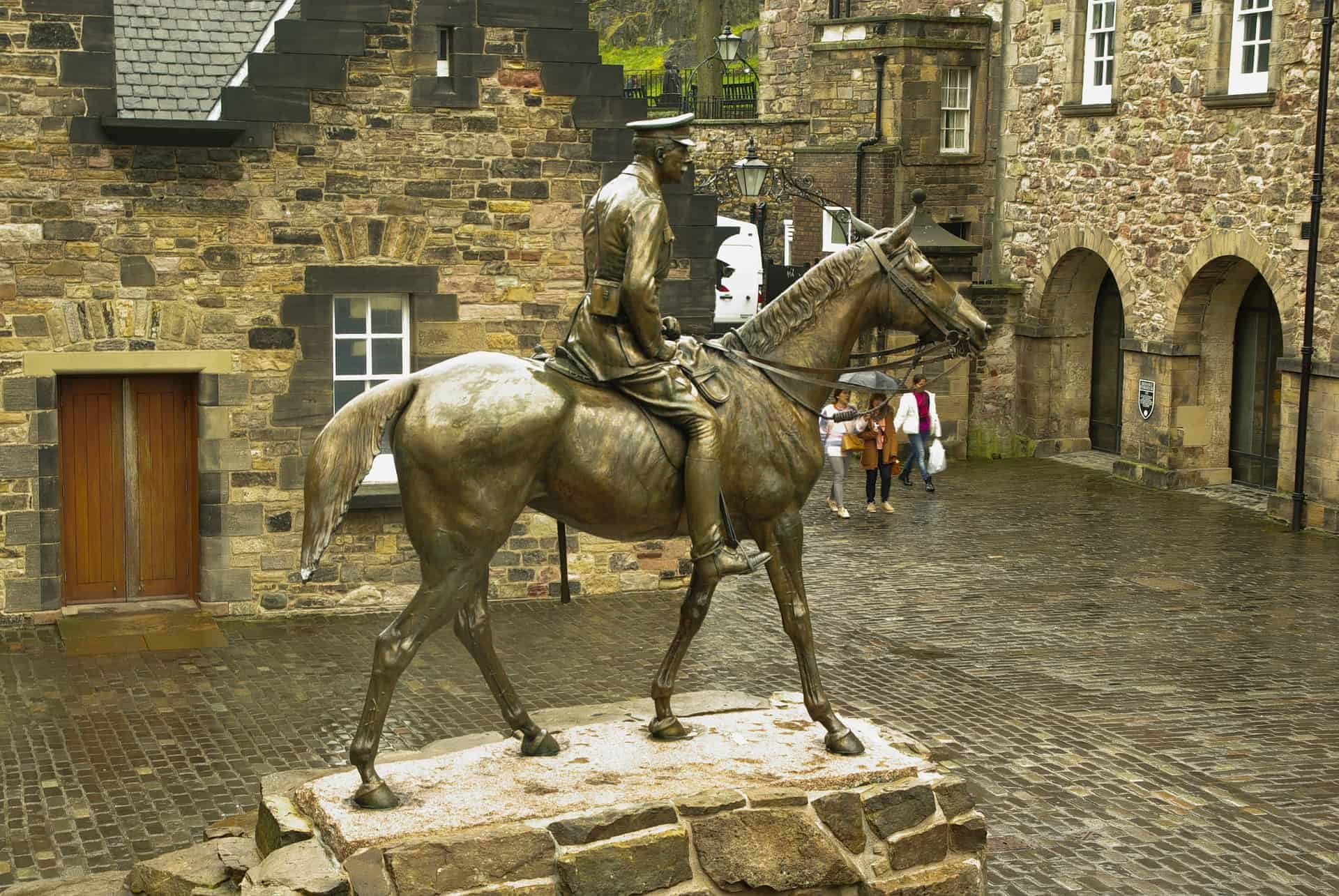
The Highlights
1: Inside the castle, you can visit the Royal Palace, where Mary Queen of Scots gave birth to her son, James VI. The rooms are decorated with period furnishings, providing a glimpse into the lavish lifestyles of Scottish royalty in the 1500s.
2: One of the main highlights of visiting Edinburgh Castle is the chance to see the Crown Jewels. They consist of the crown, sceptre, and sword of state. The crown dates from 1540 and the sceptre from 1494. You can also see the Stone of Destiny, an ancient symbol of Scotland’s monarchy that was used for centuries in the crowning of its kings.
3: For one of the best views in Edinburgh, head to the Argyll Battery near the entrance. This is also the location of the famous one-o-clock gun.
Visiting Tips
1: The ticket booth gets extremely busy, but you can purchase skip-the-line guided tour tickets in advance, which are worth getting just to avoid being stuck in the middle of a noisy, coughing crowd for 30 minutes.
2: Get to the café before midday for the best chance of grabbing a seat in front of the panoramic window. The cafe offers a fantastic view of Edinburgh’s city centre.
3: If you have a few hours left after visiting Edinburgh Castle, I recommend two attractions that are close to the entrance: The Scotch Whisky Experience and The Camera Obscura.
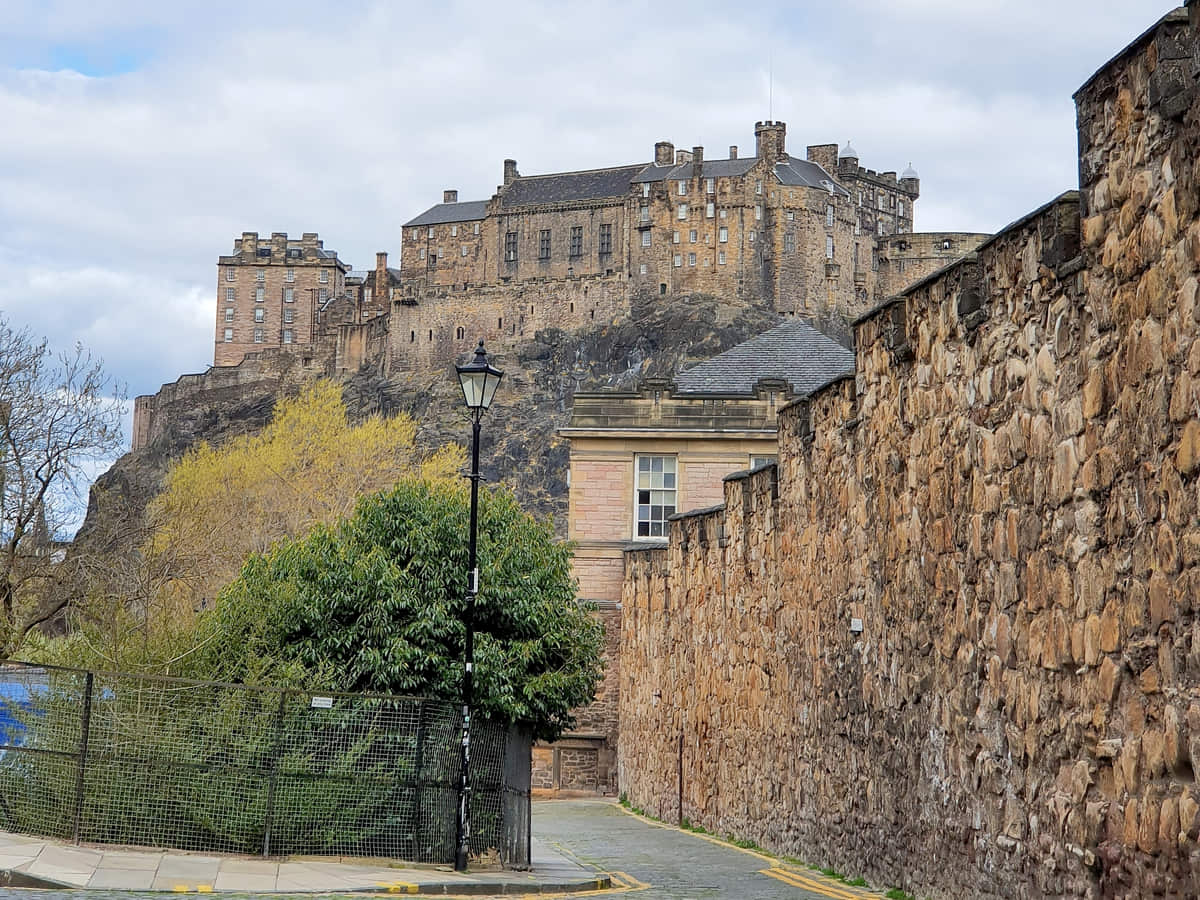
Tourist Information
You can reach the entrance to the castle by walking uphill to the end of the Royal Mile. Once you get there, you’ll be presented with a magnificent open courtyard which hosts the Edinburgh Military Tattoo, where military bands and performers from across the world gather to entertain a quarter-million people each year.
The castle is surrounded on three sides by steep embankments while the approach up the Royal Mile is on a shallow incline. Once through the entrance archway you’ll find the ticket kiosk to the left, toilets to the right, and the main entrance straight ahead.
Self-guided audio tours are available from another kiosk once you get through the gate, or altenatively you can pick up a map and guidebook from the Historic Environment Shop near the entrance. You’re then free to explore the castle at your own pace, starting with the Argyll Battery.
The Argyll Battery
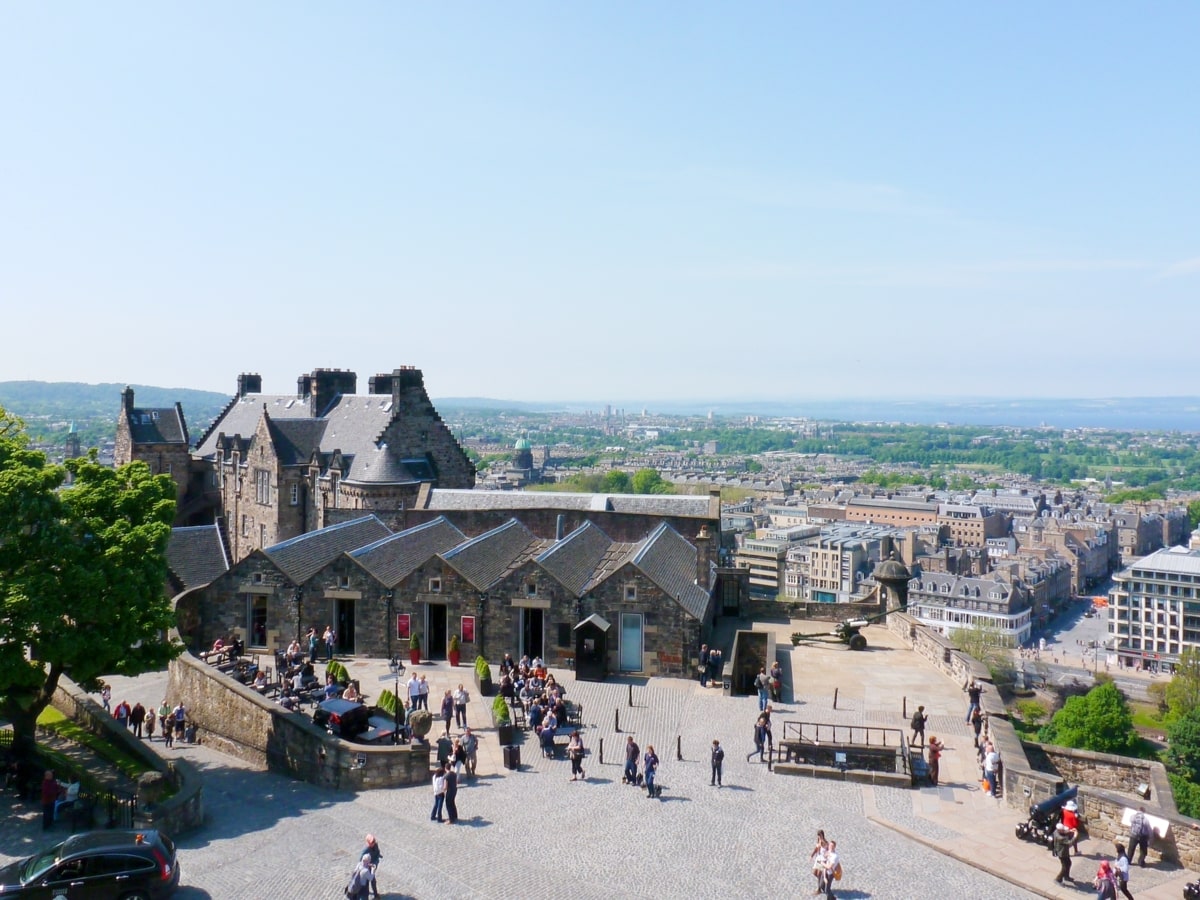
Once through the main gate, you can follow the path to the Argyll Battery. This is the location of a cafe as well as the One O’Clock Gun where a British Army gunner fires a cannon shot (not live, thankfully) at precisely one o’clock every day. Just make sure you get there early because it draws quite a crowd.
The gunshot was originally intended to alert ships moored along the Firth of Forth that the time was exactly 1 p.m. in conjunction with a visual cue on a mast sited on the top of Nelson’s monument on Calton Hill. Nowadays, the One O’Clock Gun is mainly ceremonial, but it’s still an exciting display to watch.
The large building on the south side of the battery is the governor’s house, which is today used as the castle’s administrative building as well as the officer’s mess for the remaining military personnel stationed at the castle. That, unfortunately, means the building is off-limits to tourists, but nearly every other building in the castle is accessible to the public.
As you look in this direction and slightly to the right, you’ll also see the castle tea rooms which offer top-quality food, and at the rear of this building is an expansive window that provides great views across the city.
Heading towards the southernmost point of the courtyard, you’ll find the New Barracks which were built in 1799 to house the 600 soldiers that used to be permanently stationed at the castle. To the west, you can find the National War Museum of Scotland, which was originally a store for munitions. The museum now displays exhibits from Scotland’s military history, featuring examples of military uniforms from over 400 years ago to the present day.
The Palace Yard
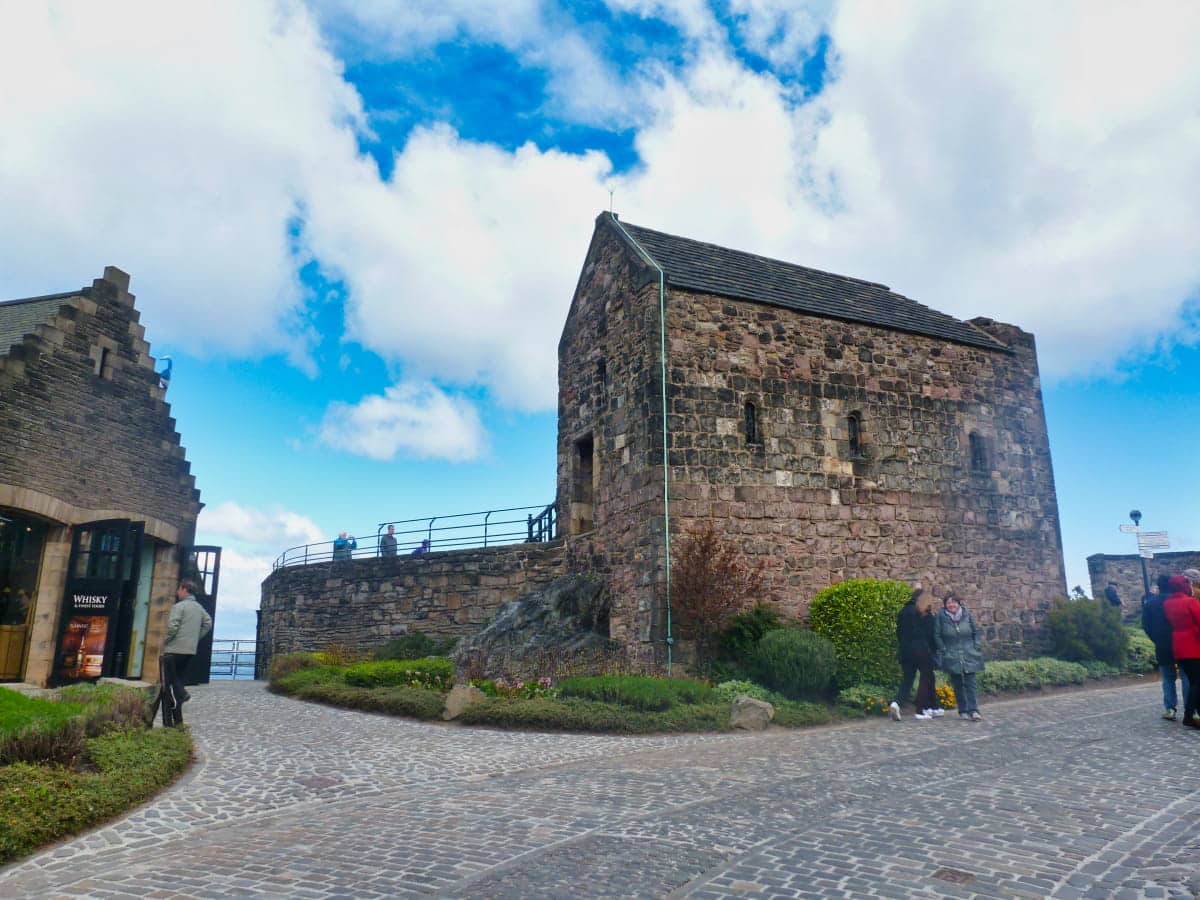
If you follow the steep, winding path up to the inner part of the castle, you’ll pass through Foogs Gate. Head through the gate to the left and you’ll see a shop housing an impressive selection of Scotch whisky in a building that was built to house the castle’s fire station. I recommend taking a look around the back of the shop because you can still see the large cisterns that were used to collect rainwater for the station.
As you walk around the small courtyard near the shop, you can’t fail to see Mons Meg, a massive artillery cannon that was built in the 15th century and given as a gift to King James II. The cannon was made unusable after the barrel burst during an official ceremony in 1681, but its credentials as one of the most powerful weapons in Scotland can be seen in the collection of cannonballs piled up on the ground next to it, each of which weighs an incredible 300 pounds.
Behind Mons Meg lies the oldest building in Edinburgh, the 12th-century St. Margaret’s Chapel. This building was built as a private chapel for the royal family by King David I and was constructed to honour the memory of his mother, St. Margaret of Scotland. It was converted for use as a gunpowder store in the 16th century but it has now been fully restored to its original condition.
Next, follow the path around the upper level of the half-moon battery where you’ll find the Palace Yard, which is a 15th-century courtyard surrounded by the Royal Palace, the Great Hall, and the Queen Anne building.
The Royal Palace
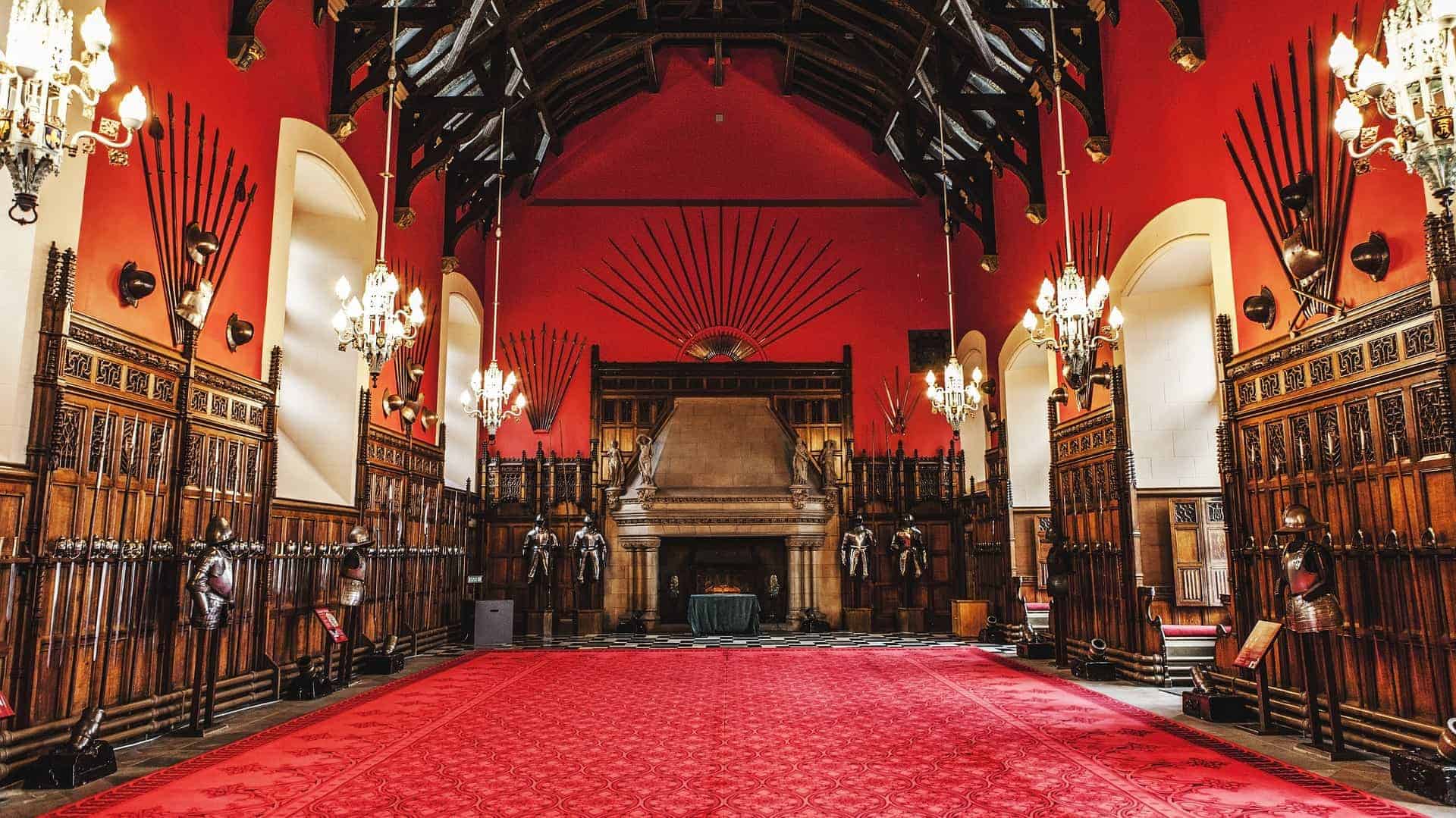
The Royal Palace is perhaps the most dramatic section of the entire castle complex as it houses not only the royal apartments where the legendary Mary Queen of Scots lived, but also the great crown room which houses the Honours of Scotland.
These artefacts are the Scottish equivalent of the Crown Jewels held in the Tower of London, and they’re no less impressive, comprising a crown, sceptre, and the Sword of State. The Stone of Scone, the ancient stone on which Scottish monarchs were crowned, is also held within the vaults of the crown room.
The adjoining Great Hall should be the next building you visit, as the spectacular collection of weaponry is a sight to behold. Originally built for formal occasions such as meetings with heads of state, the Great Hall houses fine examples of Scottish tapestries and ancient weaponry. Be sure to keep an eye open for the Claymore, a four-and-a-half-foot-long sword that’s so big you’ll wonder how someone could even lift it off the ground, let alone swing it at an opponent.
Adjacent to the Great Hall is the Queen Anne building, which was once a military museum but has now been converted into a function suite and education centre. You’ll also find another tea room, which is a great place to stop and take a break if you find your feet are aching after so much walking.
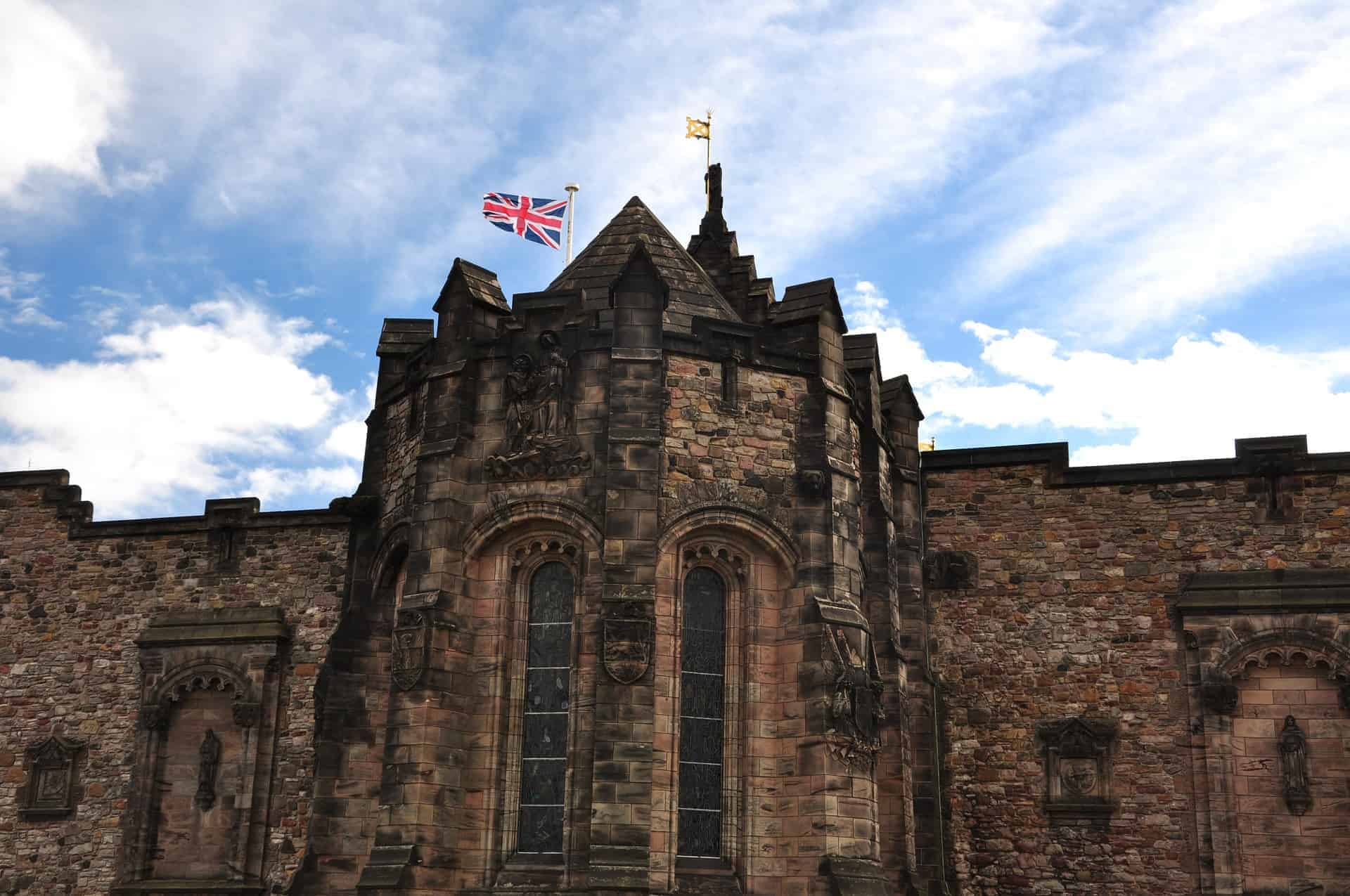
Across the courtyard, you can see the Scottish National War Memorial which was used as a barrack block and arsenal. Although the arsenal was demolished in 1755, the masonry was reused to build the memorial which commemorates the fallen British soldiers that have died in conflicts since WWI.
Inside, you’ll find stone plaques dedicated to all three services: Army, Navy, and Air Force, with an altar placed on the highest point of Castle Rock. There’s also a sealed casket containing the names of over 200,000 fallen soldiers.
There are many other exhibitions and galleries to view as you make your way around Edinburgh Castle, so it might not be possible to fit them all into one visit. I recommend purchasing a Historic Environment Scotland membership which will allows free return visits to this and hundreds of other historic attractions for a single annual membership cost.
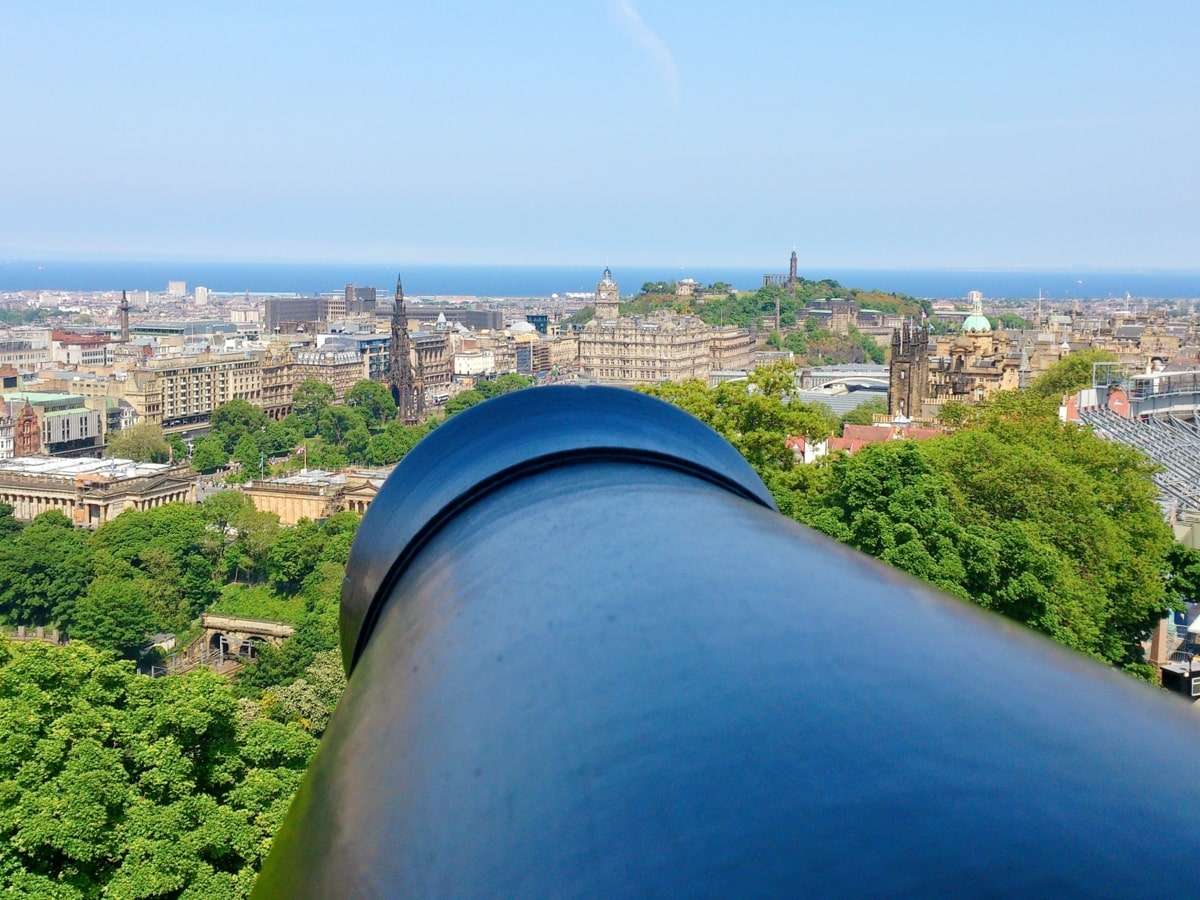
History
The earliest known settlement in Edinburgh was located at Castle Rock, the enormous rock formation that rises up in the middle of the city.
Archaeologists believe that wandering tribes inhabited the site as far back as the Iron Age, but it wasn’t until the sixth century AD that it was used as a fortress. At this point, there were four major kingdoms, and it was from these disparate groups that Scotland was born.
To the north were the Picts, to the far west were the Scots, to the west were the Britons, and to the southeast were the Angles, and as you might have guessed, they did not lead a peaceful coexistence. For over two hundred years, these four kingdoms fought each other until, in the 9th century, the King of Dal Riata, Kenneth MacAlpin, brought them together under one banner to create a nation similar to the modern Scotland we recognise today.
One of the most powerful tribes during those years was the Votadini, and it was this group that established the territory known as Lothian from which all the modern districts surrounding Edinburgh eventually emerged.
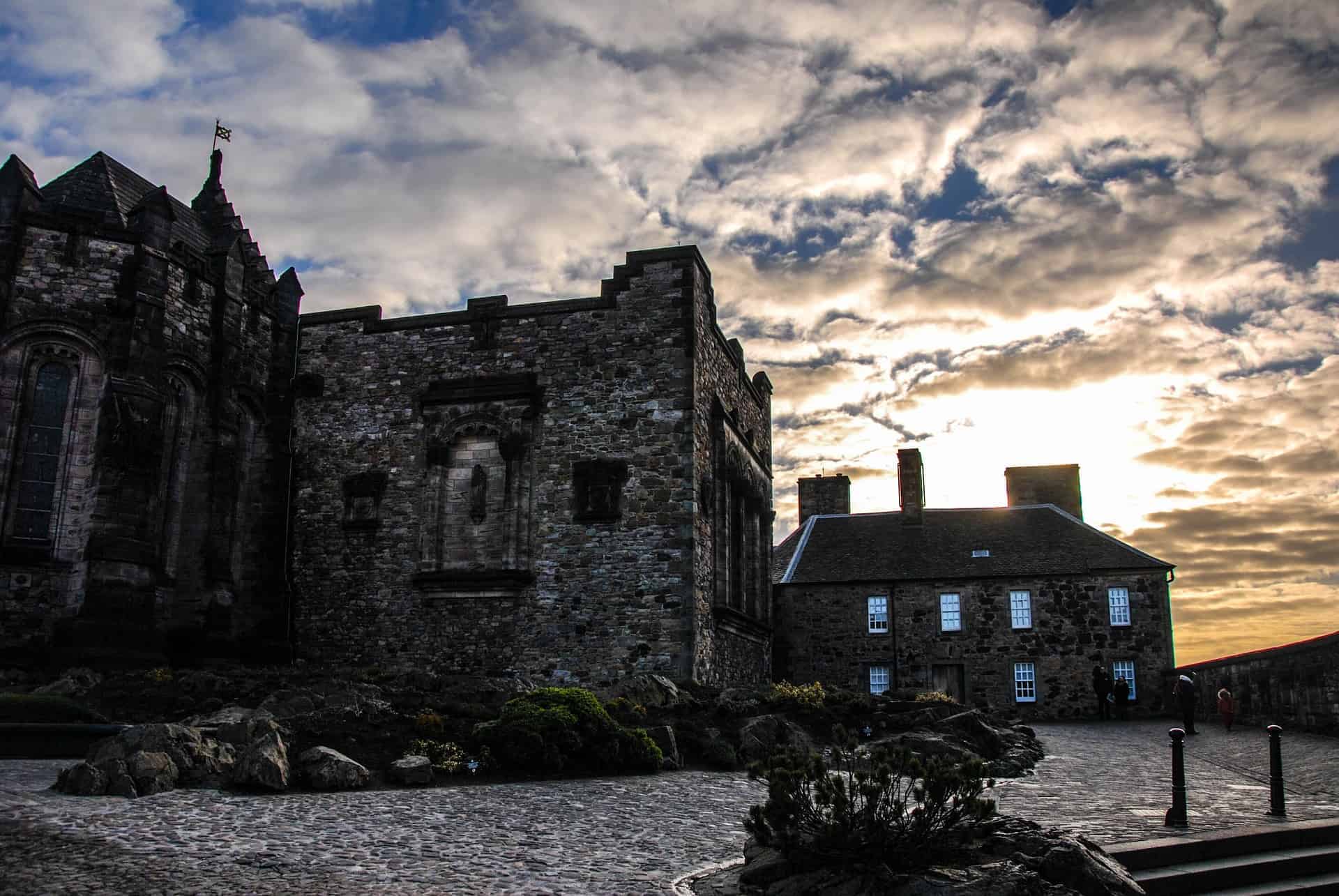
Over time, the Votadini were integrated into neighbouring tribes, and in the 7th century, a new tribe called the Gododdin built a hill fort on top of Castle Rock. The Gododdin called this fortification Etin, which later changed into the name Edin.
Historical records state that later in the 7th century, English forces captured an area in Scotland that had a fort situated on top of a rock, and they named this place Edin’s Burgh.
Records of the earliest beginnings of the castle are scarce, but it seems that by the middle of the 10th century, Northumbrian nobles had decided to make it the location of their permanent residence, which in turn led them to build increasingly fortified walls as protection from neighbouring rivals.
The castle had become a place of royal residence by the reign of David I in the 12th century and it continued this role for the next five hundred years until it was converted into a military complex with a large garrison in the 17th century.
The castle played a crucial role in the Jacobite uprising when Prince Charles Edward Stewart’s forces captured Edinburgh and used it as a military base. It also became one of the most besieged castles in the world, with 26 recorded sieges in total. Today, it’s under the care of Historic Environment Scotland, the organisation that takes care of and preserves the majority of the nation’s historic buildings.

Things to Do
Royal Palace: The Royal Palace in Edinburgh Castle holds an extraordinary collection of royal artefacts. See the crown jewels of Scotland and the famous Stone of Destiny – a symbol of Scotland’s monarchs for centuries. The Palace’s history and fascinating displays are one of the highlights of a visit to Scotland’s busiest tourist attraction.
Exceptional Views: Standing on Mill’s Mount Battery (the gun battery near the main gates) is a great way to soak up the panoramic views of Edinburgh’s skyline. You’ll see iconic landmarks like Arthur’s Seat, Princes Street, and the Firth of Forth, so make sure you take your camera to capture some truly memorable shots.
Scottish National War Memorial: The castle is home to the Scottish National War Memorial, a sombre tribute to the Scottish soldiers who died in battle. The memorial is beautiful inside and features stained glass windows and ornate stone carvings as well as several books of remembrance.
St. Margaret’s Chapel: This is Edinburgh Castle’s oldest surviving building, dating back to the 12th century. A visit to this intimate chapel is a fascinating experience, though it’s a very small space so won’t take more than a few minutes to look around. Outside the chapel, you’ll see the mighty Mons Meg – a 15th-century cannon that could shoot 330-pound projectiles up to 2 miles!
One O’Clock Gun: Don’t miss the chance to witness the firing of the One O’Clock Gun. This tradition, dating back to 1861, is a unique spectacle where the gun is fired every day at 1 pm to allow ships on the Firth of Forth to sync their clocks.
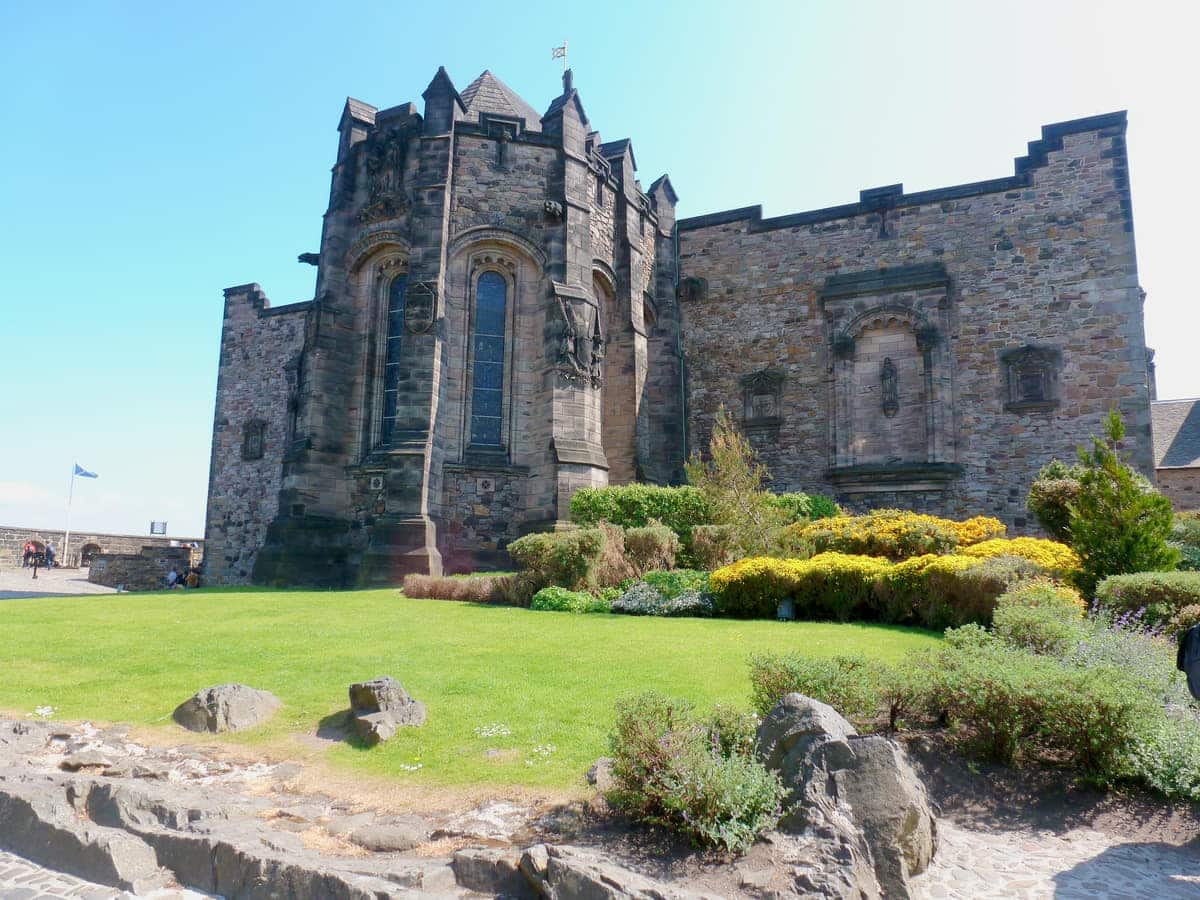
Things to Do Nearby
The Royal Mile. 197 High St, Edinburgh EH1 1PT. 1-minute walk.
A famous medieval high street that joins Holyrood Palace to Edinburgh Castle. Known for its closes and wynds that join the road along its length. It features a variety of shops, bars and restaurants.
St. Giles Cathedral, High Street, Edinburgh, EH1 1RE, is a 4-minute walk.
A grand Gothic-style mediaeval cathedral, also known as ‘The High Kirk’, was the place of worship where John Knox preached. Free to visit, and guided tours are available. Shop and café on site.
John Knox House, Scottish Storytelling Centre, High St., Edinburgh, EH1 1SR, is a 5-minute walk.
A historic building known as the home of the preacher John Knox and the royal goldsmith James Mossman. Attached to the Scottish Storytelling Centre, which has a café and runs storytelling workshops.
Princes Street Gardens. Princes St, Edinburgh EH1 2EU. 1-minute walk.
A large landscaped garden that borders Princes Street. The garden features several attractions including the Ross Fountain, the Ross Bandstand and the Scott Monument. The Scottish National Galleries are located between the east and west gardens.
Gladstone’s Land, 477B Lawnmarket, Edinburgh, EH1 2NT, is a 2-minute walk.
A historic restored house dating from the 1600s. A guided tour takes you through the history of Edinburgh and shows visitors how people lived in the days of ‘Auld Reekie’.
Frequently Asked Questions
Does the king ever live in Edinburgh Castle?
The King does not live in Edinburgh Castle. When he visits Scotland, his official residence is Holyrood Palace in Edinburgh. The private royal residence in Scotland is Balmoral Castle.
Why is Edinburgh Castle so famous?
Amongst its claims to fame, Edinburgh Castle is one of the oldest fortified buildings in Europe, it has been besieged no less than 23 times, it houses the Scottish crown jewels, it is home to the Scottish National War Memorial, and it hosts the annual Edinburgh Military Tattoo.
Was Edinburgh Castle built on a volcano?
Edinburgh Castle was built on top of Castlehill, an ancient remnant of a volcanic plug much like nearby Holyrood Park.
Does anyone live at Edinburgh Castle?
No one currently lives in Edinburgh Castle full-time. However, it was the official Scottish royal residence until the 17th century.

